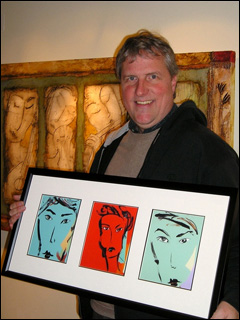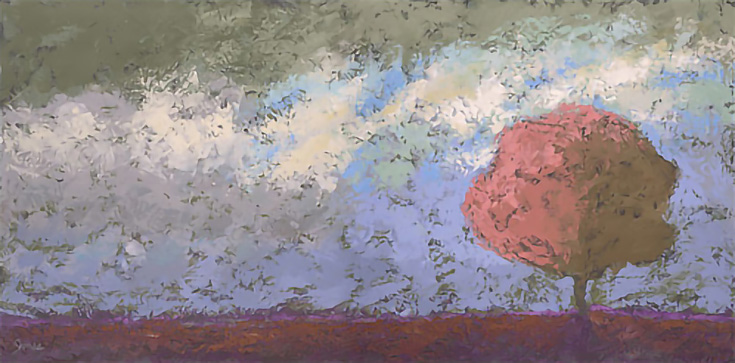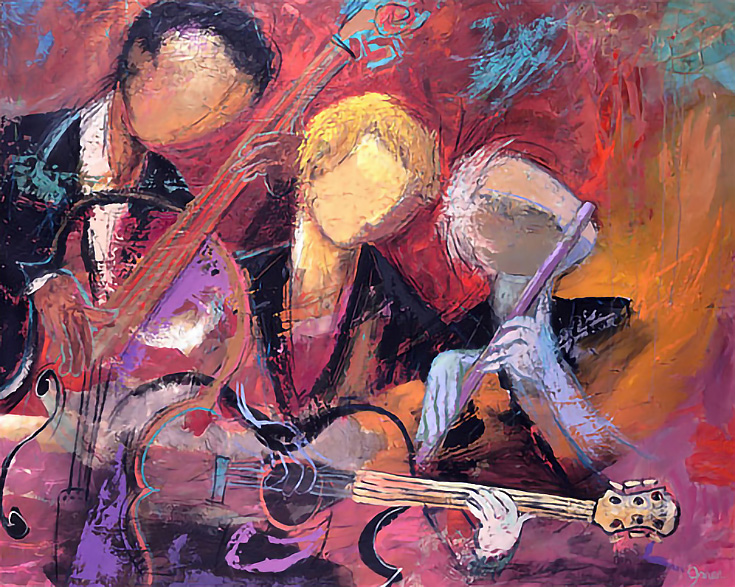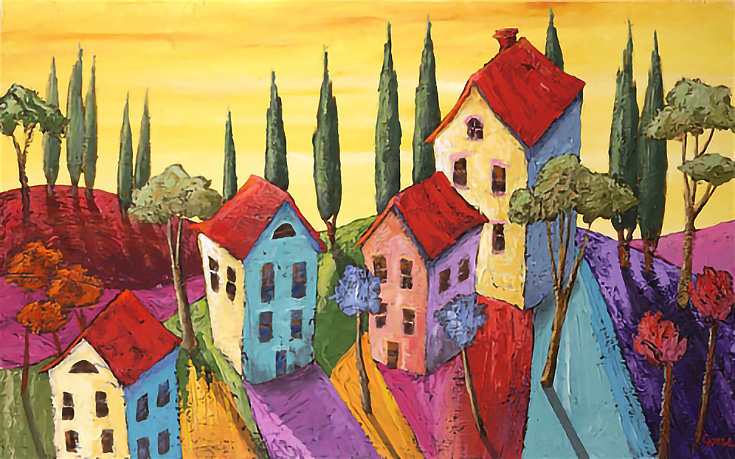
It seems that artists like Jones, with his art-world experience, his openness, and his clarity of purpose are few and far between, both then and now.
In the following interview, which took place earlier this week at his gallery in Cleveland, Ohio, Brian was kind enough to speak with me about his art and his career—as well as share some insight into his success so far.
From the music business to an artistic awakening
Jones began his career as a sales and marketing rep in the music industry, but when large corporate takeovers finally snuffed the last of the small independent firms, Jones was out of a job.
Beginning all over again meant devoting time and energy into a photo restoration shop that also showed a small amount of local art. In 1999 he attempted his first painting as a self-taught artist inspired by the Impressionists.
He recalls his first effort as a “truly terrible” painting.
That honesty and authenticity (which is rare today) belies the tremendous success of Brian Jones as an artist. He is a man who unapologetically creates art for both himself and the common man.
Success, art, and embracing the gift
During my visit, we discussed the controversial issue of profitability, and the notion that commercial success somehow diminishes the “fine” part of fine art.
Brian showed a lack of elitism in his responses that immediately appealed to me. Through his own simple ideology, he expressed a clarity and vision for art that isn’t usually found in the hallways or classrooms of arts academia.
“The young artist has in his soul to change the world, yet he is instructed in “I-ness”—”I” being the notion that art is about his perception, his vision and his creative statement. And while those things are important, “I-ness” can not change the world. Trying to own it (your art) is akin to trying to own your own life. You can’t.”
Rephrasing Jones statement, I added, “The idea of eyes turned inward cripples an artist and is at cross purposes to his goal.”
“Exactly,” he agreed. “It might surprise you, but if I stopped painting tomorrow I wouldn’t think of it again. Since I am not attached as the “doer” it doesn’t own me back. It is always a gift I am receiving.”
This attitude is clearly seen in Brian’s images, and even in his lifestyle. He is devoted to meditation, finding the desire to create during natural cycles of inspiration.
His work is textural, encompassing many subjects, bright, intuitive, and immediate. The connection that his work creates with buyers is evident in the number of title cards with red dots that adorn his doorway.
“I saw this at another gallery,” he said. “It had a tremendous impact on me. All these cards represent pieces that someone purchased and are now enjoying.”
There were far too many for me to count.
And that is really it for Brian Jones. He is using his gift, which he realizes is for the benefit of both himself and others. He isn’t bogged down in self doubt or concerns as to whether his work “challenges” would-be critics. Why should he? His audience is 98% of the art buying public. As a businessman and artist, he is exactly where he wants to be, with eyes on the horizon.
Finding opportunities to connect
We talked at length about every artist’s desire to pursue his or her own vision while creating works that are sold and enjoyed in numbers that can sustain a good life.
Early in Brian Jones’ career he was asked to show in a large gallery in Ann Arbor while also showing in Cincinnatti. He could turn down neither, so he set out on a 3-month labor of producing his favorite works—large textural florals, still life’s and landscapes—while opening himself up to figurative and jazz oriented subject matter.
Each show received 45 pieces. He recalls that these opportunities would not have presented themselves if he had not already produced a large body of work; taken that work around to galleries, and presented himself as an artist who would promote both himself and the gallery. He saw the opportunity as a partnership, not just an event.
To Jones, profit is not a bad word. Instead, it is necessary to allow artists to continue to work and live, doing what they do best. As he put it, “I can sell an original or I can sell prints, expertly done, that are affordable and exceeds my customers expectations. In any case, we have all received what we wanted.”
And Brian gets to do even more. He is happily creating everyday and is usually four commissions deep. While I was there a group of customers came in and meandered into the framing area.
“Are you the real Brian Jones?” asked one visitor, holding up a print he had purchased earlier. Another customer joined in, “I love your work!”
“I am,” Brian laughed. And with the savvy of years in sales and marketing he got up and engaged his fans with a genuine appreciation for their visit.
There was no “I-ness” about him. He had connected.
Learning to soar
In the two years after his first portfolio presentation, Brian Jones participated in numerous solo shows and appeared in juried competitions as well—something he believes all artists should strive for.
The Ann Arbor show, in particular, is what pushed him into defining his own style.
“You learn from every painting.” Jones stated—and to prove it, he paints just about everything, exploring his gift while waiting for the “creative tsunami” that cycles in and out of his life. “It always comes back” he said.
The results of his “creative tsunami” were what over 250 people came to see at his Ann Arbor opening. I’d say that counts as a success in anyone’s book.
“What would you say to the artist that wants what you have?” I asked. “What would you say to the artist that has been taught to isolate in on one message, and make only challenging, provocative art?”
“I would say. . . you would be committing yourself to only a small portion of what you could embrace, what you could achieve, with only a small percentage, less than 2%, attracted by the provocation.”
He went on. “No matter what business you’re in, if you don’t have a product that people want to own than you will not make a living. It is just that simple.
Inspiration (and the spiritual component of being true to ourselves) is not opposed to the material world of living, food, money, work. They are two wings of the same creature. You have to flap both to soar.”
To see more of Brian Jones’ work, please visit www.brianjonesart.com.
This post may contain affiliate links.



